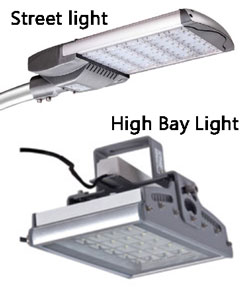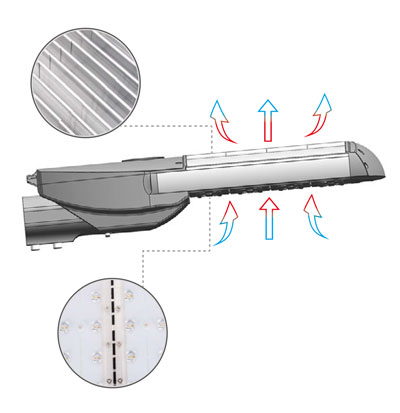|
|
LED technologies
16.01.2014

|
We recommend you to compare LED efficacy (in lumens/watt) and LED luminous flux (in lumens) when comparing different lights from various manufacturers. It is also recommended to look into operational hours and colouring index.
It is important to compare lights witch have the same colour temperature.
Our team suggests to use LED lights witch has the smallest current to drive it. When the current is smaller the temperature in diode is also smaller,
hence the lifetime increases. Usually a diode has a heat sink attached to it. If the heat sink is designed properly we can achieve longer lifetime. Our 3rd generation LED street lights and high bay lights have gaps between the modules witch increase
thermal dissipation and will still maintain IP66 protection class.

|
The lights use Philips LED luminous source.
Because LED lights fade after using them and if you would like to use them over 50000 hours then you need to use more powerful light from the beginning. After 50000 operational hours our LED-s will still produce ca. 70% of the original lumen output.
If you desire to have more lumen output at the end of the life cycle a more powerful light source is needed from the beginning. Switching lights does not decrease LED-s expected life age.
We also recommend you to compare the colour rendering index (CRI or Ra). The CRI shows how well can the light present standard colours. The maximum value is 100. Our indoor LED lights have Ra≥80 and outdoor fixtures have Ra≥75.
Because LED fixtures cost more they are not considered as an alternative when choosing new lights. For example when comparing FB and LED bulbs, the fluorescent bulb has life age of 8000-20000 hours.
Although the lifespan of a LED tube is longer it does not save you enough money, but if you will add the cost of electricity, the LED technology should save money after approximately 1.5 - 2 years!
Please use the following links to see our LED products:
LED Street Lights" »»
LED High Bay Lights »»
|
|
|